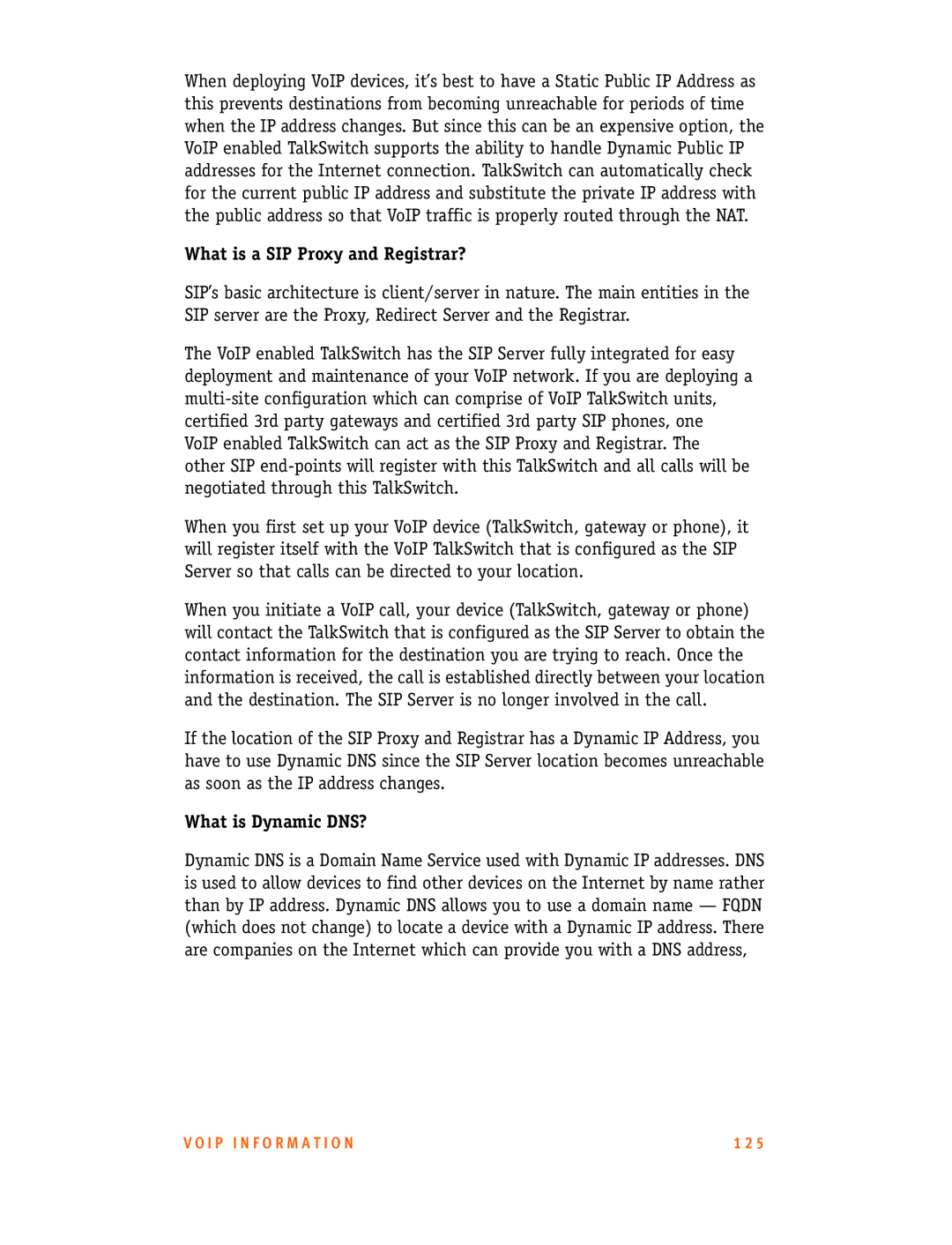When deploying VoIP devices, it’s best to have a Static Public IP Address as this prevents destinations from becoming unreachable for periods of time when the IP address changes. But since this can be an expensive option, the VoIP enabled TalkSwitch supports the ability to handle Dynamic Public IP addresses for the Internet connection. TalkSwitch can automatically check for the current public IP address and substitute the private IP address with the public address so that VoIP traffic is properly routed through the NAT.
What is a SIP Proxy and Registrar?
SIP’s basic architecture is client/server in nature. The main entities in the SIP server are the Proxy, Redirect Server and the Registrar.
The VoIP enabled TalkSwitch has the SIP Server fully integrated for easy deployment and maintenance of your VoIP network. If you are deploying a
When you first set up your VoIP device (TalkSwitch, gateway or phone), it will register itself with the VoIP TalkSwitch that is configured as the SIP Server so that calls can be directed to your location.
When you initiate a VoIP call, your device (TalkSwitch, gateway or phone) will contact the TalkSwitch that is configured as the SIP Server to obtain the contact information for the destination you are trying to reach. Once the information is received, the call is established directly between your location and the destination. The SIP Server is no longer involved in the call.
If the location of the SIP Proxy and Registrar has a Dynamic IP Address, you have to use Dynamic DNS since the SIP Server location becomes unreachable as soon as the IP address changes.
What is Dynamic DNS?
Dynamic DNS is a Domain Name Service used with Dynamic IP addresses. DNS is used to allow devices to find other devices on the Internet by name rather than by IP address. Dynamic DNS allows you to use a domain name — FQDN (which does not change) to locate a device with a Dynamic IP address. There are companies on the Internet which can provide you with a DNS address,
V O I P I N F O R M A T I O N | 1 2 5 |
